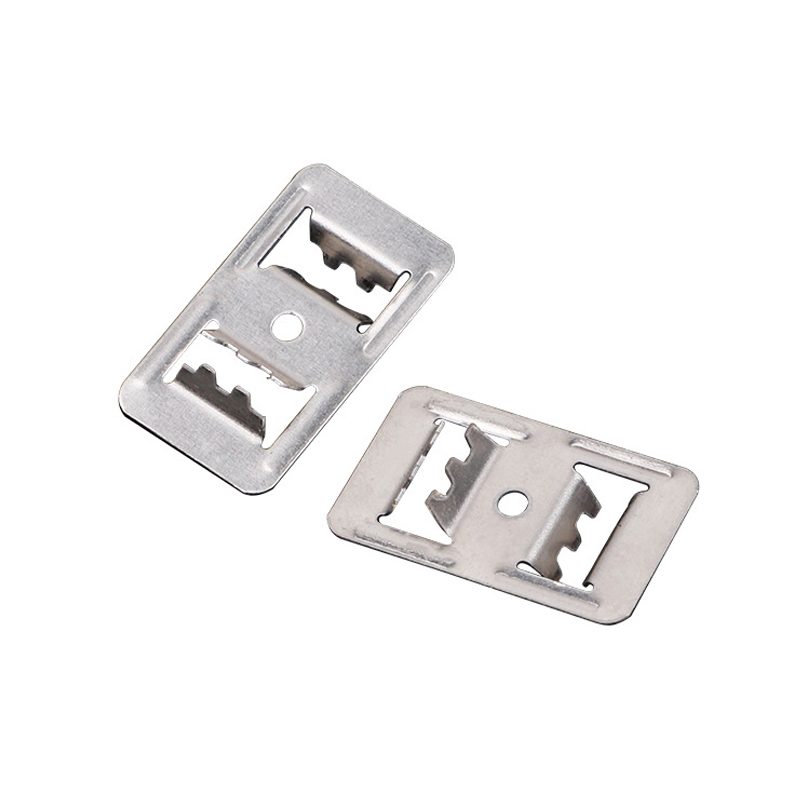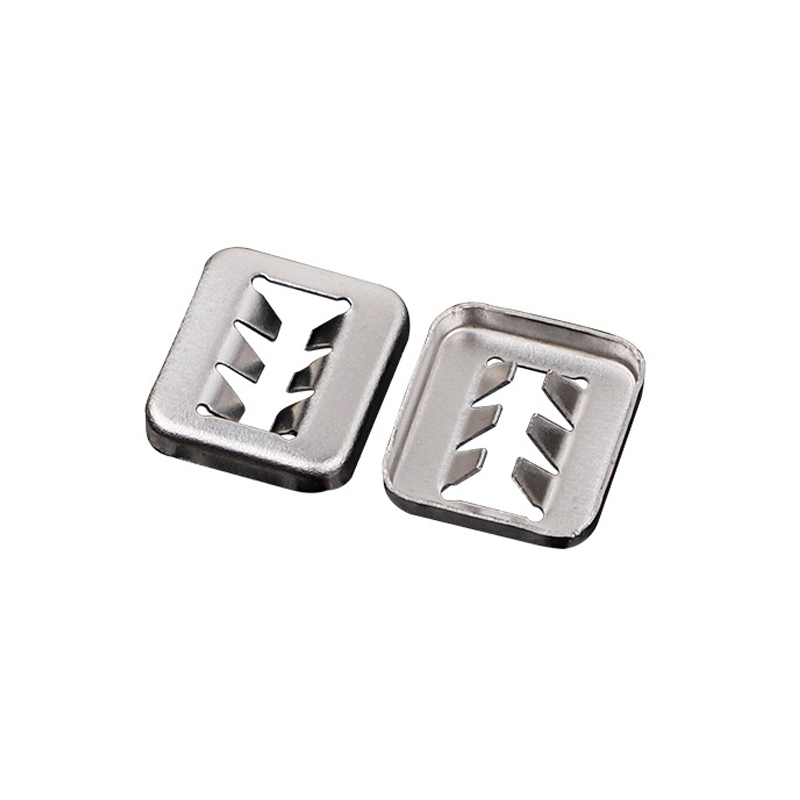Precision Progressive Stainless Steel Stamping Parts
Technical and operational points to pay attention to when produce stamping stainless steel stamping parts:
① The working surface roughness value of the working parts (concave and convex molds) for mold design and manufacturing should be as small as possible. During the deep drawing operation, attention should be paid to maintaining the smoothness of the surface of the working parts of the mold, and the dirt on the surface of the mold should be cleaned at any time.
② The cutting edge of the punching die should be kept sharp, and it must be sharpened promptly after being blunt.
③ Using a lower stamping speed, it is recommended to reduce the stamping speed by one-third compared to carbon steel in the punching process.
④ Compared with carbon steel or non-ferrous metals, the clearance value of the die for stamping stainless steel parts should be smaller, while the clearance value of the die for bending, drawing, or forming stainless steel parts, as well as the radius of the convex and concave die corners, should be larger.
⑤ During deep drawing processing, corresponding lubricants should be selected for different deep drawing materials.
Materials & Manufacturing Processes
Diverse Material Options
Stainless steel stamping parts are not limited to stainless steel but also incorporate materials such as aluminum, brass, iron, zinc, and alloys. Customized materials can be selected based on specific application requirements. For instance, brass and copper metals are increasingly used in decorative architectural and fixture components due to their aesthetic appeal.
Advanced Manufacturing Techniques
The production process integrates multiple methods:
Casting: For complex geometries.
Stamping: Efficiently shaping metal sheets.
Bending: Achieving curved or angular designs.
Welding: Joining components for structural integrity.
Laser Cutting: Precision trimming of intricate patterns.
Screen Printing: Adding logos or markings.
Specialized deep drawing processes are employed to create parts with unique, deep-formed shapes.
This structured approach ensures versatility in meeting diverse industrial and aesthetic demands while maintaining technical precision.
Technical Quality Assurance for Stainless Steel Stamped Parts: Ensuring the quality of stainless steel stamped parts is a systematic process that involves multiple stages, such as material selection, processing techniques, and quality inspections. Here are several key points summarized from search results: Material Selection and Quality Control: First and foremost, the choice of material is crucial to the quality of stainless steel stamped parts. Material quality control includes receiving inspection, pre- and post-cleaning inspection, and inspection before production, all aimed at ensuring that material quality meets production requirements1. Additionally, stamping materials should meet the corresponding process requirements; for example, thickness tolerances must comply with standards, and materials should have high surface quality, free from defects like scale, cracks, rust spots, scratches, or delamination.Processing Technology: The accuracy of the processing technology directly affects the quality of stainless steel stampings. In stamping operations, when there are higher requirements for sectional quality and dimensional accuracy of the workpiece, it may be necessary to increase the number of processes to ensure the quality of the stamped parts. For example, additional finishing operations can be added or precision blanking operations can be used directly3. Stamping materials for precision stampings should meet the corresponding process requirements, such as thickness tolerances that comply with standard. Quality Inspection: Quality inspection is a critical step in ensuring the quality of stainless steel stampings. This includes first piece inspection, random checks of initial, intermediate, and final pieces, online partition inspection, entire basket inspection of components, and component precision testing1. These inspections help identify and correct quality issues in a timely manner, preventing the release of defective products.


Specification:
| 1.Optional Material: | stainless steel 201,301,304,316. | |||||
| 2.Process Technologies: | stainless steel stamping parts | |||||
3.Reachable Tolerance: | 0.01-0.1mm | |||||
| 4.Optional surface treatment: | Zinc plated, Nickel plated,Powder coating,painting,brushed,PVD,chrome plated,polished. | |||||
| 5.Sample Making : | Rapid prototype according to customer's drawing. | |||||
| 6.Quality Guarantee: | Pre-production sample validation -Inspection in production process-Final inpesction. | |||||
| 7. Certificate of Quality system: | ISO9001 : 2015, IATF 16949 : 2016 | |||||
If you have demand for stainless steel stamping parts,stamping stainless steel parts,progressive stamping parts, Welcome to contact us, we will provide you best price and good quality product.